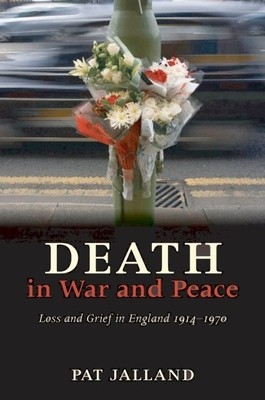
- We will send in 10–14 business days.
- Author: Pat Jalland
- Publisher: Oxford University Press, USA
- ISBN-10: 0199265518
- ISBN-13: 9780199265510
- Format: 15.6 x 23.4 x 2.1 cm, hardcover
- Language: English
- SAVE -10% with code: EXTRA
Reviews
Description
Death in War and Peace is the first detailed historical study of experience of death, grief, and mourning in England in the fifty years after 1914. In it Professor Jalland explores the complex shift from a culture where death was accepted and grief was openly expressed before 1914, to one of avoidance and silence by the 1940s and thereafter. The two world wars had a profound and cumulative impact on the prolonged process of change in attitudes to death in England. The inter-war generation grew up in a bleak atmosphere of mass mourning for the dead soldiers of the Great War, and the Second World War created an even deeper break with the past, as a pervasive model of silence about death and suppressed grieving became entrenched in the nation's psyche. Stories drawn from letters and diaries show us how death and loss were experienced by individuals and families in England from 1914; and how the attitudes, responses, and rituals of death and grieving varied with gender, religion, class, and region. The growing medicalization and hospitalization of death from the 1950s further reinforced the growing culture of silence about death, as it moved from the care of the family to that of hospitals, doctors, and undertakers. These silences about death still linger today, despite a further cultural shift since the 1970s towards greater emotional expressiveness. This fascinating study of death and bereavement helps us to understand the present as well as the past.EXTRA 10 % discount with code: EXTRA
The promotion ends in 16d.06:53:01
The discount code is valid when purchasing from 10 €. Discounts do not stack.
- Author: Pat Jalland
- Publisher: Oxford University Press, USA
- ISBN-10: 0199265518
- ISBN-13: 9780199265510
- Format: 15.6 x 23.4 x 2.1 cm, hardcover
- Language: English English


Reviews